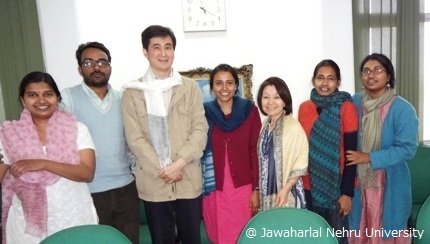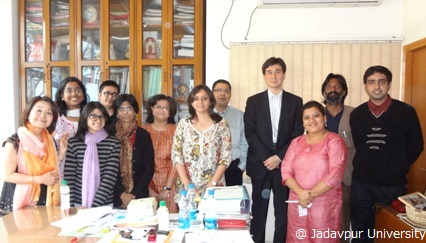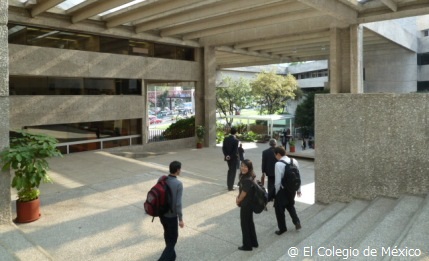Linda Richards, a historian of science and a Sylff fellow at Oregon State University, has been informing the public about the issue of nuclear “environmental justice” in the Navajo Nation—once the source of a quarter of the supply of uranium in the United States—for over 25 years. In April 2011 she organized a Sylff-funded workshop to address the issue of uranium mining contamination in the land of the Diné—the Navajo people in their own language (see part 1 of this article)—in Arizona. Workshops were also held in October 2011 at three Oregon campuses under the Oregon Sylff Consortia—University of Oregon, Oregon State University, and Southern Oregon University. The following notes depict the highlights of the discussion in Oregon:
It is estimated that 80% of the nuclear fuel chain (the mining, milling, production, testing, and storage of nuclear materials for weapons and energy) occurs on or near remaining indigenous communities worldwide. Just one example of the consequences of this disproportionate exposure is unveiled in the history of uranium mining on the Navajo Nation.
However, the Sylff workshops in Oregon shared the experiences of the Navajo as not only a declension tale but also as a story of empowerment that explained the efforts of the panelists (Jeff Spitz, filmmaker of The Return of Navajo Boy, http://navajoboy.com/; Elsie Mae Begay, Navajo advocate and grandmother; Perry H. Charley, Navajo scientist/educator and cultural specialist; and Oliver Tapaha, Navajo educator) to inform the public and spark an environmental cleanup on the Navajo Nation.
The audience at all three campuses were especially interested in Navajo culture, current cleanup efforts, and a recent court ruling that will allow further uranium mining in an area immediately adjacent to Navajo lands, but outside its jurisdiction, that could contaminate already scarce drinking water supplies.
Charley, a Navajo elder who co-founded Diné College’s Dine Environmental Institute and the Uranium Education Project, discussed traditional Navajo relationships with the earth and their ties to Mother Earth. These ties begin before birth and are consummated shortly after birth by the burial of their umbilical cord in the earth. The earth is not viewed as a resource to use but as a sacred gift to protect for future generations. These relationships are not discussed or considered in federal risk assessment strategies. From 2002 to 2008, Charley served on the National Academy of Science’s Committee on Improving Practices for Regulating and Managing Low-Activity Radioactive Wastes to help develop safer regulations for mining waste.
The report—which took years to draft—concluded that radiation management, handling practices, transportation, disposal, long term monitoring and safety was a patchwork of inconsistent federal, state and tribal regulations, but this never made headlines. Charley’s work, though, became part of grassroots initiatives—such as decades of effort by local organizations, the film The Return of Navajo Boy, and a 2006 in-depth report by journalist Judy Pasternak in the Los Angeles Times called “The Peril That Dwelt among the Navajos”—that eventually caused Congressional hearings to be held in 2007.
The hearings inquired why so little had been done by the responsible party—the US government, the sole purchaser of the uranium from the 1940s until the 1970s—to remedy the pollution facing the Navajo. A five-year, multiagency cleanup plan was consequently begun in 2008, but it continues to be underfunded, and the residual radioactive contamination has not been moved off the Navajo Nation but remains indiscriminately scattered throughout it.
Updates on the cleanup, which has so far removed 34 of the literally hundreds of residential structures and only 14 cubic yards, out of millions of cubic yards of radioactive waste associated with mining and milling, can be found at the Environmental Protection Agency’s website, “Addressing Uranium Contamination in the Navajo Nation.”
Repeated requests for a comprehensive epidemiological study for the Navajo Nation have continued to be ignored, however, and the mining companies see an opportunity to come back and start mining again, even though there is a Uranium Mining Ban. The Diné College Uranium Education Program initially started the process that after many years became the essence of the Navajo Nation’s 2005 Diné Natural Resources Protection Act.
The act banned mining and processing sites on the Navajo Nation until all the contamination is removed. However, the President of the Navajo Nation recently took a special trip to Paris to look at the French nuclear and radiation safety program. The moratorium on mining may be in reality, only symbolic, subject to the whim of the leaders.
In addition, the Nuclear Regulatory Commission has awarded four in-situ uranium mining licenses to mine on what is considered by many to be Navajo land despite the ban. All federal legal avenues to stop the threatened mining have been exhausted, but the dissenting judge in the final Court ruling of March 8, 2010, said that the NRC had allowed its own limits on radioactivity for drinking water to be exceeded.
A local group, the Eastern Navajo Diné Against Uranium Mining, with the help of the New Mexico Environmental Law Center, submitted a petition to the Inter-American Commission on Human Rights in May of 2011 arguing that the Nuclear Regulatory Commission’s decision to grant Hydro Resources Inc. a license to mine uranium ore near Church Rock and Crown Point, New Mexico, is a violation of national and international laws, including the 2007 United Nations Declaration on the Rights of Indigenous People that President Barack Obama has committed the country to uphold.
The new mines, first permitted by NRC in 1999 but contested in court since then, could contaminate drinking water for 15,000 Navajo residents in and around two communities that lie just outside the Navajo Nation boundaries drawn by the federal government but are considered by members of the tribe to be part of their homeland.
”By its acts and omissions that have contaminated and will continue to contaminate natural resources in the Diné communities of Crownpoint and Church Rock,” the petition reads, “the State has violated Petitioners’ human rights and breached its obligations under the American Declaration of the Rights and Duties of Man.”
Uranium is not the only environmental health threat to the Navajo, moreover. There are rich reserves of coal, and two of the most polluting power plants in America are on the Navajo Nation. Some days the air in the Four Corners area is yellow, and the incidence of upper respiratory disease and certain kinds of cancer is present, along with the threat of high levels of mercury from the pollution. However Navajo tribal administrators approved a new super coal fired plant to also be built.
Charley, after spending all of his professional life addressing and researching the sad legacy of uranium mining, currently suffers from a form of laryngeal cancer. Despite his illness, he continues to inform and educate others. While the problems facing the Navajo are complex, the Sylff forums also raised awareness of indigenous rights on the whole, particularly in Ashland, where the program was a part of the SOU United Nations Club celebration of the 2007 Declaration of Indigenous Rights. There, after the film and question-and-answer session, Whistling Elk Drum, a local drum group of the Red Earth Descendants, performed several sacred traditional songs.
After the performance, the 2007 UN Declaration on Indigenous Rights was read in its entirety by Grandmother Agnes Baker-Pilgrim of the International Council of Thirteen Indigenous Grandmothers (see http://www.grandmotherscouncil.org/), Jane Ayers, and Daniel Wahpepah.
The Declaration is the result of a 20-year process of negotiation and advocacy for its inclusion into the United Nation’s legal structure. Jane Ayers is a national journalist and leader who was a participant in the early discussions of the document 20 years earlier, and Daniel Wahpepah is a local leader and founder of Red Earth Descendants and the 501 C3 Natives of One Wind Indigenous Alliance. Wahpepah’s late uncle Bill Wahpepah was a national leader in the American Indian Movement who worked to protect the rights of all Native Americans.
The moving reading was followed by a panel on indigenous rights facilitated by Richards and including Pilgrim, Wahpepah, Charley, Elsie Mae Begay (who was the lead character in The Return of Navajo Boy), and Oliver Tapaha, (Diné, PhD in education). Tapaha discussed his hope to increase knowledge of the issues and his efforts to discuss and share the issues with his students on the Navajo Nation. The group shared their individual perspectives reflecting on the many issues facing indigenous and subsistence cultures worldwide, especially due to climate change. The panel reflected on how cultural, physical, and spiritual rights are strongly articulated in the document but are not guaranteed, nor made enforceable, without the help and will of civil society around the world.
The forums provided an intergenerational, interdisciplinary, and multicultural opportunity for discourse. The University of Oregon forum included many students from environmental studies courses, and at OSU nuclear scientists and engineers were in attendance. At all three venues, the audiences provided feedback in surveys that showed listening to the filmmaker, the elders, and Navajo people had impressed upon them the value of listening to other cultural perspectives, speaking out in the face of injustice, and preserving the environment.
















